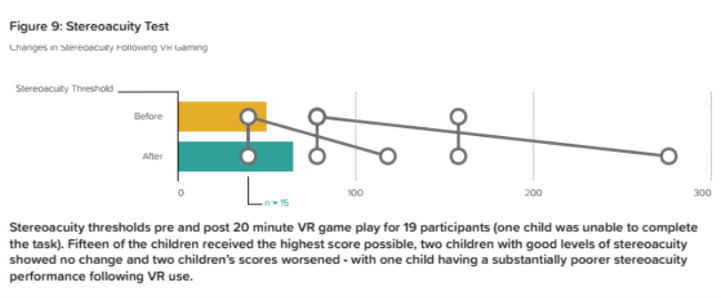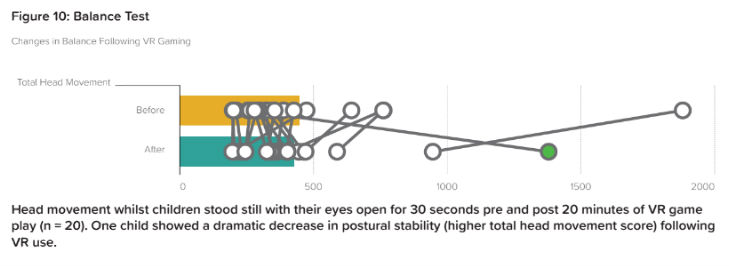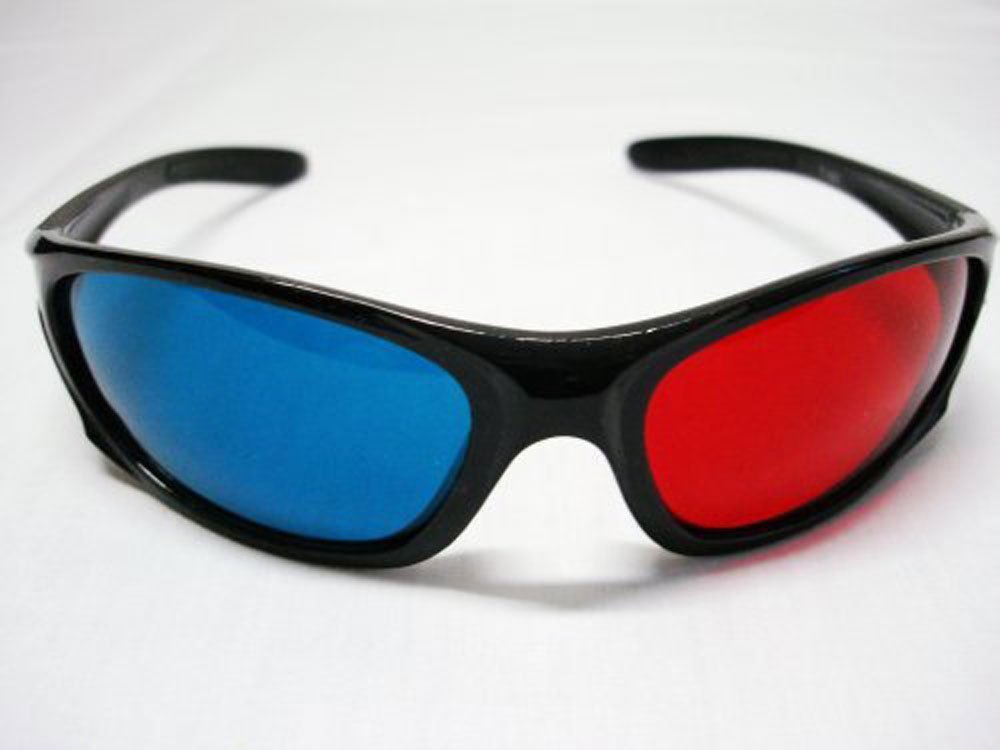An alarming headline in The Guardian popped up late last month: Virtual reality headsets could put children’s health at risk. After seeing that I reached out the researchers who conducted the original study and looked through a 40-page report I was provided explaining their methodology, which involved only 20 children. As the researchers note, “hardware manufacturers often advise that VR use is limited to children over 13 years old, but there appears to be no rationale behind the choice of 13 as a lower limit.”
“We restricted the sample of children to 20 as a precaution,” the report reads. “We were unsure of the effects of VR and saw this study as preliminary, with a view to expanding once results were known.”
The small study performed three tests before and after kids aged 8-12 spent 20 minutes wearing a VR headset. The three tests were eyesight, stereoacuity (depth perception) and balance. Researchers found no difference in eyesight and in both the stereoacuity and balance tests most children experienced no changes. In the stereoacuity examination, however, two children experienced a worsening effect in their test performed after wearing a VR headset.

In the balance test, one child “showed a dramatic decrease in postural stability” following VR use.

Under a summary header the report suggests “these findings present a starting point for investigations into health and safety issues related to VR.” That’s a much less eye-catching headline than the one The Guardian used.
“Overall, every child who took part in the study loved the VR experience,” another section of the report reads.
One thing I found interesting is the nature of the stereoacuity test researchers used:
“The test involved asking children to determine which direction a pac-man shaped character was facing whilst viewing a pair of stereo images comprised of random dots. These images were designed so that, when viewed using 3D (red and cyan anaglyph) glasses, the silhouette of the pac-man character would leap-out in front of the display (as a result of binocular disparities). Following each correct response, the task increased in difficulty (it became harder to detect the character as the disparities became smaller) and the point at which a child could no longer make out the character’s orientation provided an index of their stereoacuity (with lower scores indicating better performance). This test has previously been shown to have discriminative power and strongly correlates with the gold-standard TNO stereo test. Sixteen of the twenty children could see the character without any problems pre VR play. Fifteen had the same score post VR, and one participant’s score worsened. From the remaining four participants, one child was was unable to perform the assessment on both attempts – indicative of impaired stereoacuity in that child. Two remained stable, and one had a steep drop off in their stereo sensitivity- from being able to discriminate the orientation of the object with relative small binocular disparities, to only just managing to make out the pac-man shape in the easiest conditions.”
It seems odd they would use an old method of simulating a 3D visual effect (red and cyan glasses) as a way of examining the effect of a VR headset, and I’ve reached out to the researchers to find out more detail. Update: Professor Mark Mon-Williams at the University of Leeds, Specialist advisor to the health and safety phase of the VR study, offered more detail in an email regarding their stereoacuity test:
It was conducted under more controlled conditions (e.g. lighting, distance) than in a standard ophthalmology clinic – but is basically the gold standard assessment technique.
There are two important points. First, a child’s stereoacuity should remain stable, Second, good binocular function is required if a child is to enjoy good levels of stereoscopic vision.
In the small study described within the report, the important point is that the SAME assessment was carried out before and after the VR exposure. The expectation is that the same levels of stereoscopic vision should be measured before and after.
The fact that the levels changed indicates that the binocular system was placed under some stress. In this regard, the stereoacuity measure is a proxy measure of whether the visual system was affected by the VR exposure.
The way that the assessment system presents the stereoscopic images is not a factor when using this measure to detect change before and after exposure.

From the report:
“Whilst it is difficult to draw broad conclusions from these tests, the results suggest that for the majority of children, one 20 minute VR game play will have little impact on their stereoacuity in the short-term. These data also indicate that, for a very small population of children, VR use may disrupt normal binocular coordination. These data make sense in the context of a relatively small number of children having less stable binocular vision, and it is this population that might be expected to be affected adversely through use of VR (at least in the short term – the long term consequences have not been established). The characteristics of children who might be most prone to disruption of binocular vision are currently unknown. We also do not know how long any disruption persists, nor the consequences of repeated exposure over a longer time frame. Further research into these potential factors is planned.”
This is obviously an important subject to the many parents out there (myself among them) who have children begging to play games like Job Simulator. The report suggests the following guideline for parents:
Restrict use to children with no history of ophthalmological problems
“You will note that this pilot study included a relative small number of participants and that the evidence is not conclusive (in either direction). Nevertheless, we believe it is incumbent on the VR industry to address this topic and several larger scale experiments are required to provide a comprehensive examination of the questions raised in this study,” University of Leeds researcher Dr. Faisal Mushtaq wrote in an email, adding they are also “extremely excited about all the possibilities that VR has for improving health.”
I will update this post if I hear more from the researchers, and of course I will follow this subject closely going forward. You can check out the full report here.
Update: Information added from an email received from one of the researchers and a paragraph was removed about a hypothetical test.

























